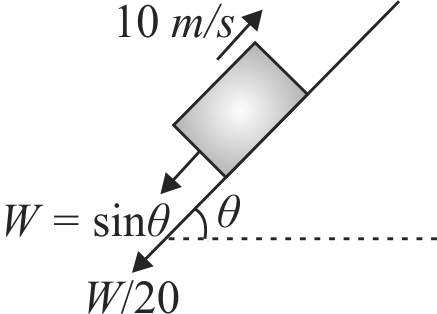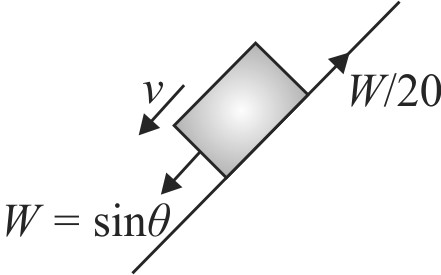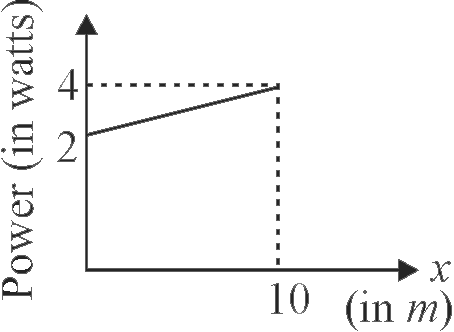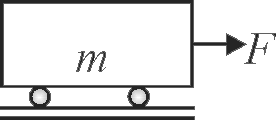355467 A car of weight \(W\) is on an inclined road that rises by 100 \(m\) over a distance of 1 \(km\) and applies a constant frictional force \(\frac{W}{{20}}\) on the car. While moving uphill on the road at a speed of \(10\;m/s\), 1 the car needs power \(P\). If it needs power \(\dfrac{P}{2}\) while moving downhill at speed \(v\) then value of \(v\) is :
355467 A car of weight \(W\) is on an inclined road that rises by 100 \(m\) over a distance of 1 \(km\) and applies a constant frictional force \(\frac{W}{{20}}\) on the car. While moving uphill on the road at a speed of \(10\;m/s\), 1 the car needs power \(P\). If it needs power \(\dfrac{P}{2}\) while moving downhill at speed \(v\) then value of \(v\) is :
355467 A car of weight \(W\) is on an inclined road that rises by 100 \(m\) over a distance of 1 \(km\) and applies a constant frictional force \(\frac{W}{{20}}\) on the car. While moving uphill on the road at a speed of \(10\;m/s\), 1 the car needs power \(P\). If it needs power \(\dfrac{P}{2}\) while moving downhill at speed \(v\) then value of \(v\) is :
355467 A car of weight \(W\) is on an inclined road that rises by 100 \(m\) over a distance of 1 \(km\) and applies a constant frictional force \(\frac{W}{{20}}\) on the car. While moving uphill on the road at a speed of \(10\;m/s\), 1 the car needs power \(P\). If it needs power \(\dfrac{P}{2}\) while moving downhill at speed \(v\) then value of \(v\) is :



